 |
[08] About the Paper & Culture Museum |

| This establishment features info points at the numbered locations shown on this map, where you can get more information through the Trip Guide Fukui app. |
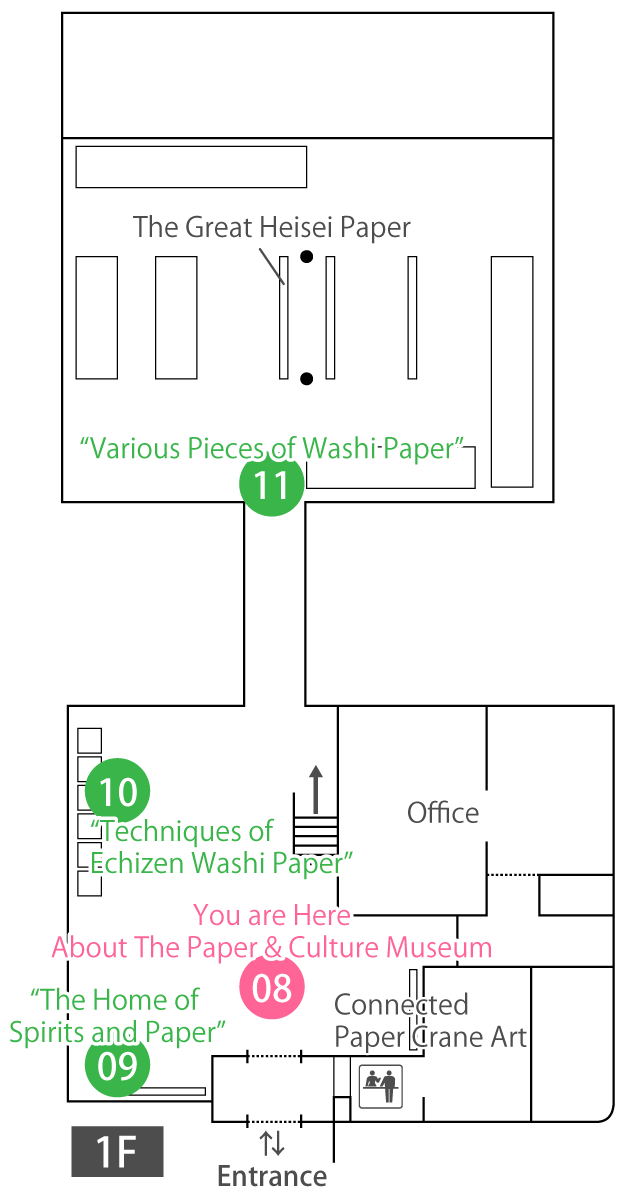
|
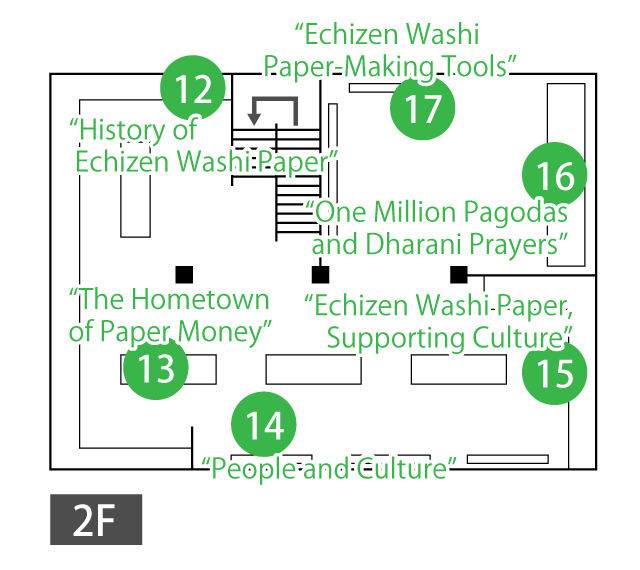
|

| Map of the Echizen Washi Village area |
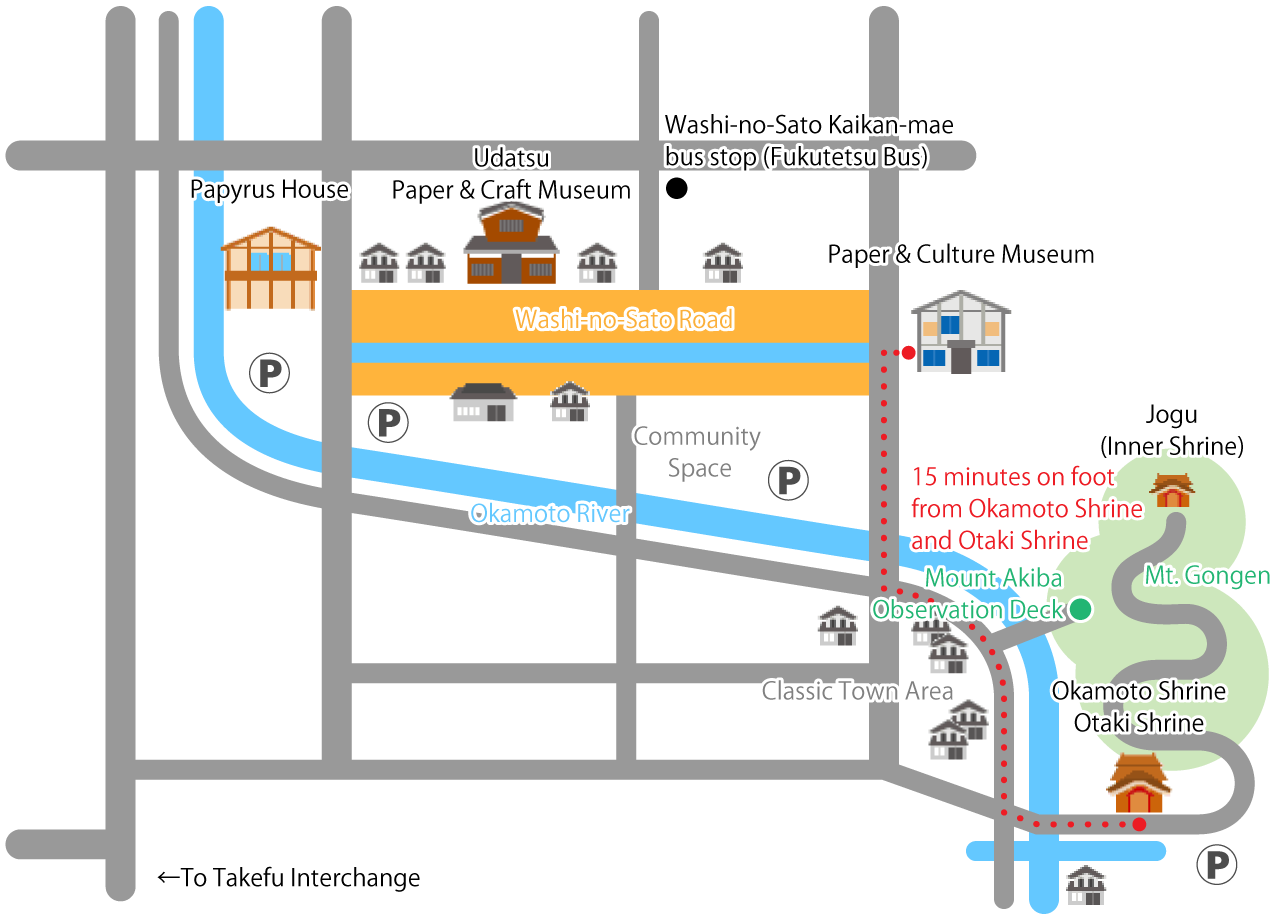
|

|
Echizen Washi Village, located here, prides itself on over 1,500 years of history, as well as exceptional quality and technique even among Japan's many washi paper makers.
|
Through these many centuries of history, this area has produced a great deal of washi paper. The many varieties of paper produced here are but one of Echizen washi paper's distinctive features. At the Paper & Culture Museum, visitors can learn about the development of Echizen washi paper, as well as see many historical examples of washi paper on exhibit.
The exhibits include writings that tell stories of long-ago history and old documents, as well as a variety of other rare items, making this the perfect place to learn about the history of Echizen washi paper.
|

Background Information for Visitors |
| The Differences Between Washi Paper and Western Paper |
|
Western paper has developed with the goal of improving techniques that allow large amounts of paper to be produced as quickly as possible. To this end, the paper pulp fibers are short, and artificial ingredients are used to strengthen or adjust the color of the paper.
|
|
On the other hand, traditionally-made washi paper is made from paper pulp with long plant fibers, brought together in an exceptionally simple manner - and that's it.
|
Because of the simple production process, the finished paper takes on the characteristics of the natural fibers of the plants used to make it, such as paper mulberry, mitsumata paper bush, gampi shrub, and hemp. By taking advantage of these different plants, paper can be made that meets various different needs.
The longer plant fibers make washi paper stronger than western paper, while the natural materials make it more resilient to humidity, allowing washi paper to survive for a thousand years or more.
|

| Connected Paper Crane Art "Renkaku" |
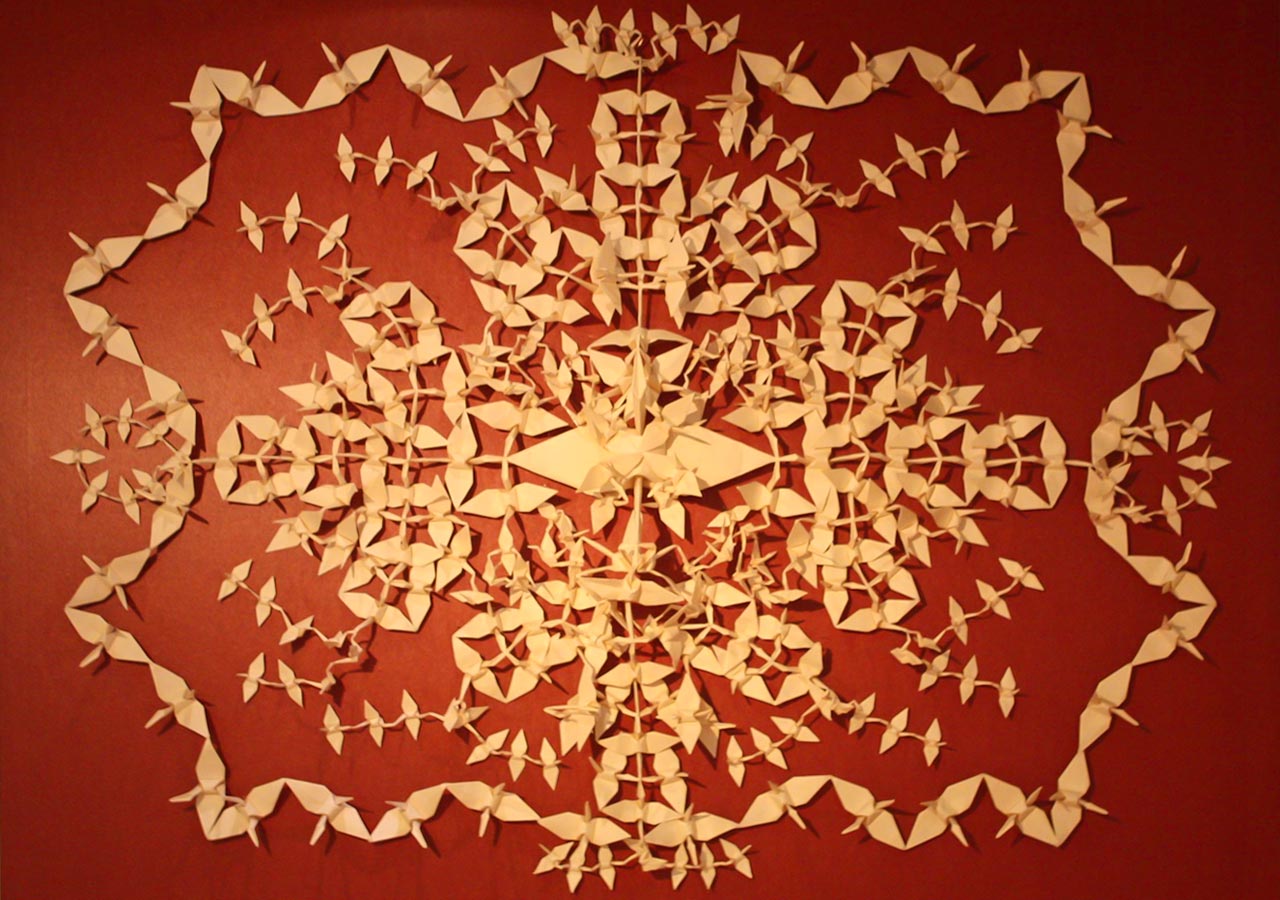
|
Five different sizes of origami paper cranes, connected at their heads, tails, or wings, all made from a single large sheet of washi paper with cuts made in it.
A project like this calls for the strength and pliability of washi paper, as well as sheer size. A type of paper meant for nihonga Japanese paintings, called kumohada mashi paper (or "cloud skin" hemp paper) was used, allowing observers to enjoy the paper's distinctiveness alongside the delicate yet dynamic work produced from it.
|
Size: 2,000 mm × 2,700 mm.
Number of paper cranes: 307
Design and production leaders: Chie Matsubara, Michi Matsubara (currently residents of Kyoto)
|

| Various Pieces of Washi Paper |
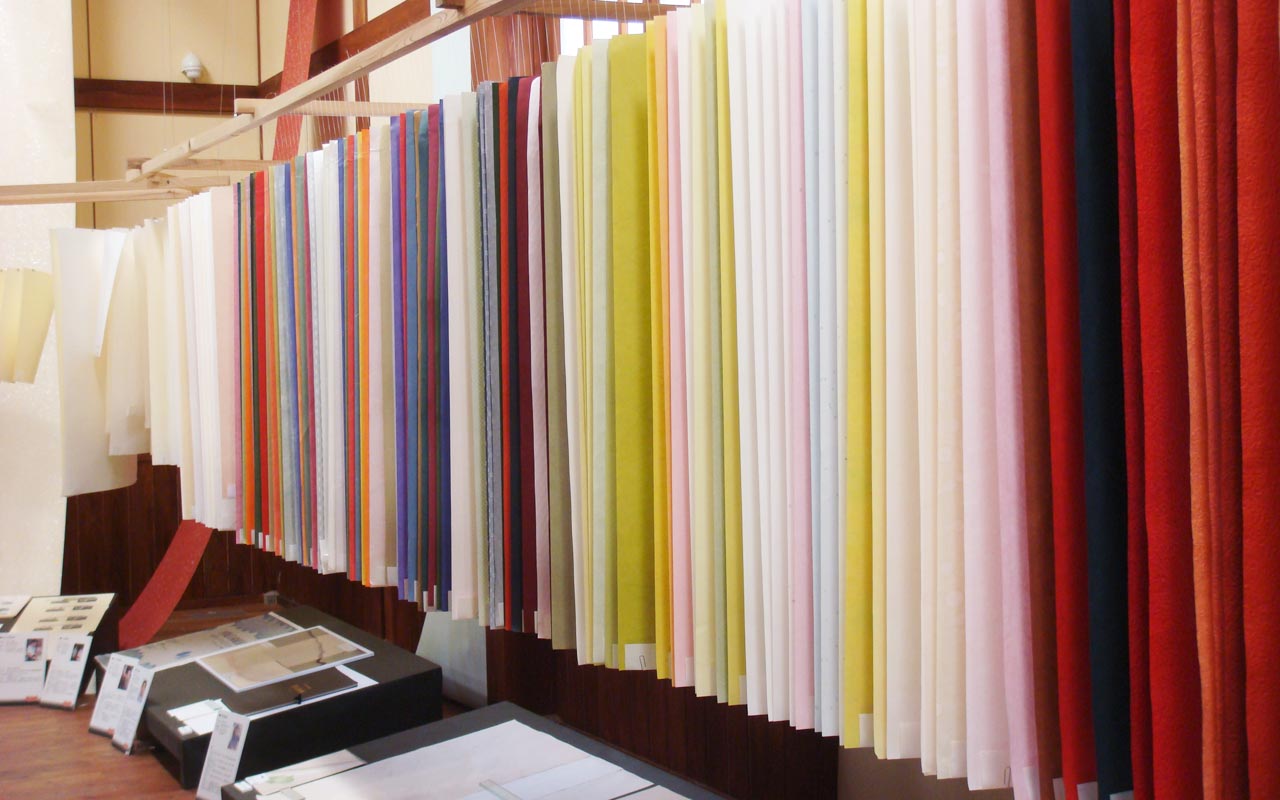
|
|
A gallery of the many distinctive types of washi paper still being produced today by Echizen's many paper makers. The collection exhibition room in the rear of the first floor features a thousand different pieces of traditionally-made Echizen washi paper on display, spanning uses from writing to painting.
|

| Meiji-Era Central Government Banknotes |
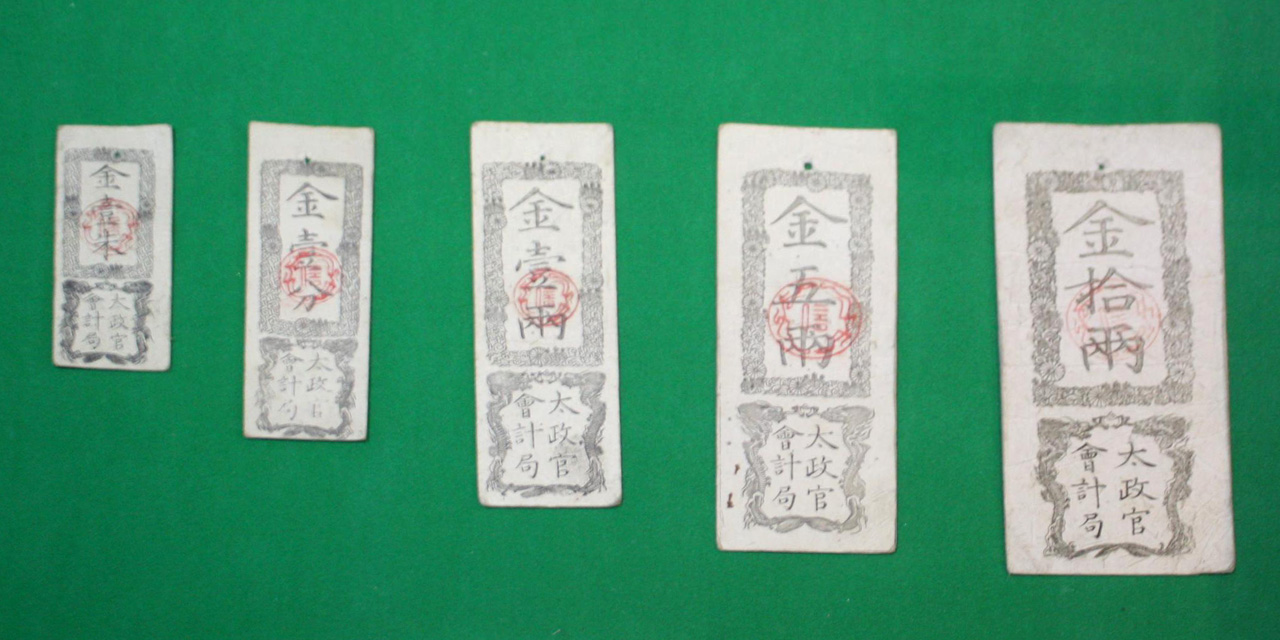
|
|
In 1875, the Ministry of Finance invited paper makers from Echizen to produce for them paper that was to be the most durable and the most suited for printing in the world, for use in Japan's banknotes. On the second floor, you can see banknotes issued by feudal domains, as well as the central government banknotes that officially marked the beginning of paper money in Japan. |

|

